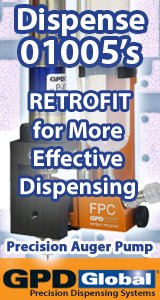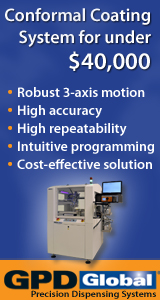Printed Circuit Board Assembly & PCB Design Forum
SMT electronics assembly manufacturing forum.
- SMTnet
- »
- Electronics Forum
- »
- Washing Screens - Foam Everywhere, Help!
Washing Screens - Foam Everywhere, Help!
Views: 6680
![]() Hi All-
I've got an old industrial dishwasher converted ove...
- Oct 31, 2016
by
jbreit
Hi All-
I've got an old industrial dishwasher converted ove...
- Oct 31, 2016
by
jbreit
![]()
![]()
![]() Maybe you could try Zestron Vigon plus DF 30
...
- Nov 01, 2016
by
Jandon
Maybe you could try Zestron Vigon plus DF 30
...
- Nov 01, 2016
by
Jandon
![]()
![]()
![]() > The screens go in with some paste left on 'em, (operato...
- Nov 09, 2016
by
SuMoTe
> The screens go in with some paste left on 'em, (operato...
- Nov 09, 2016
by
SuMoTe
![]()
![]()
![]() You're right. It is BS. I should have said "the operators ...
- Nov 09, 2016
by
jbreit
You're right. It is BS. I should have said "the operators ...
- Nov 09, 2016
by
jbreit
![]()
![]()
![]() Just from my recently acquired experience working with wash ...
- Nov 14, 2016
by
chris
Just from my recently acquired experience working with wash ...
- Nov 14, 2016
by
chris
![]()
![]()
![]() Lazy operators empowered by management. Sounds like you may ...
- Nov 18, 2016
by
SuMoTe
Lazy operators empowered by management. Sounds like you may ...
- Nov 18, 2016
by
SuMoTe
![]()
- SMTnet
- »
- Electronics Forum
- »
- Washing Screens - Foam Everywhere, Help!







